Plugging Into Pedestals
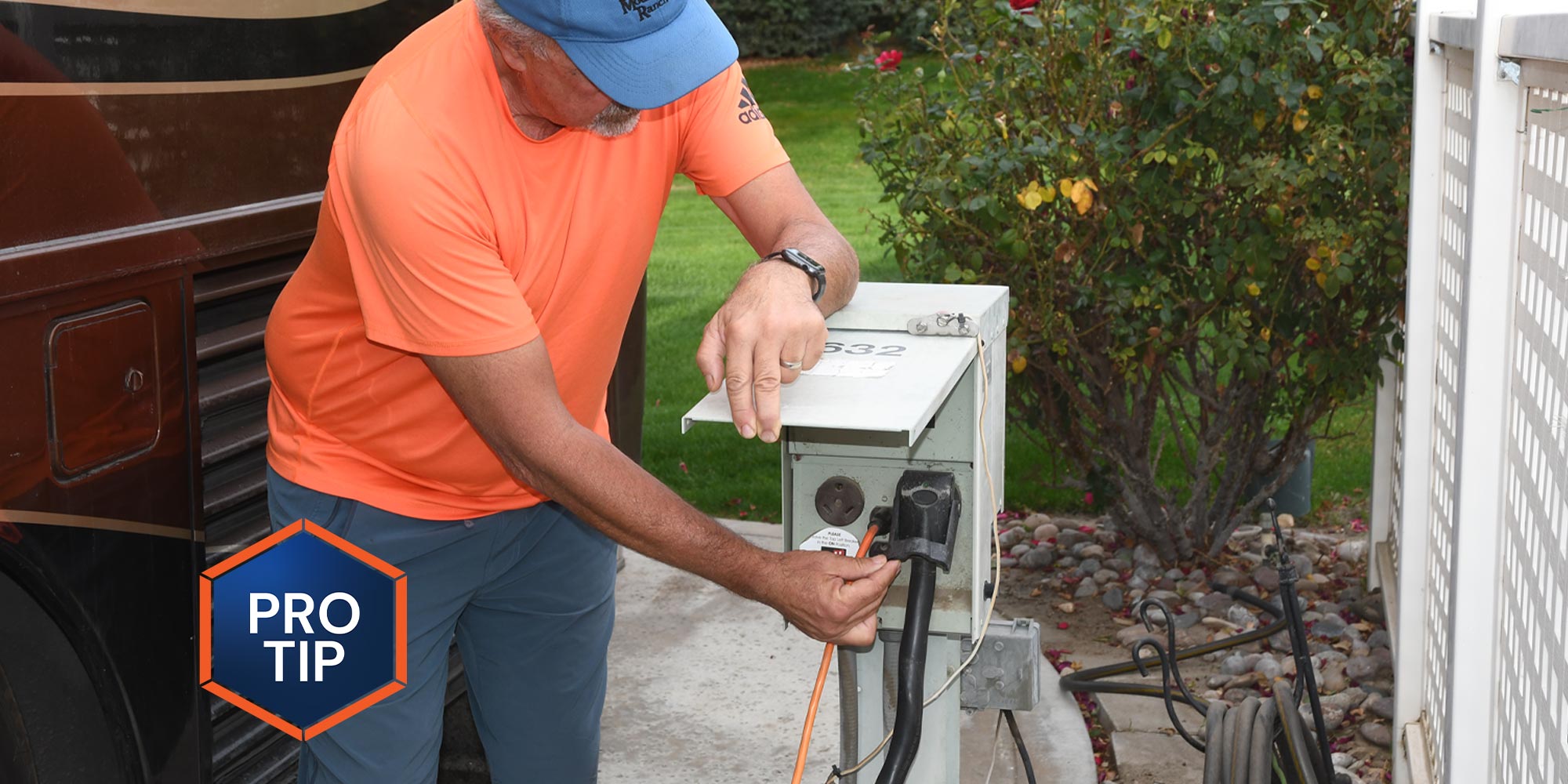
Demystifying 30- and 50-amp hookups from shore power
Getting outdoors and “roughing it” in an RV means different things to different people. For those who just want to leave their hectic lifestyle for a few days and find the nearest campground or RV resort, being able to tap into the park’s power requires being able to connect the RV’s power cord to the electric pedestal — and there will be times when that may not be possible. Your RV, for example, may have been built with 30-amp onboard power but the resort may only offer 50-amp plug-ins.
So, you’ll need an adapter.
All modern RVs come in one of two flavors of power service: 30-amp and 50-amp. While a third option of a 20-amp outlet is available, there are no currently produced RVs (that we’re aware of) that have a 20-amp shore power cord — it’s either a TT-30 connector, which is 30 amps at 120-volts AC, or a NEMA 14-50 connector, which is 50-amps at 240-volts AC (split into two separate circuits of 50 amps at 120-volts AC, for a total of 100 amps of current at 120 volts AC).
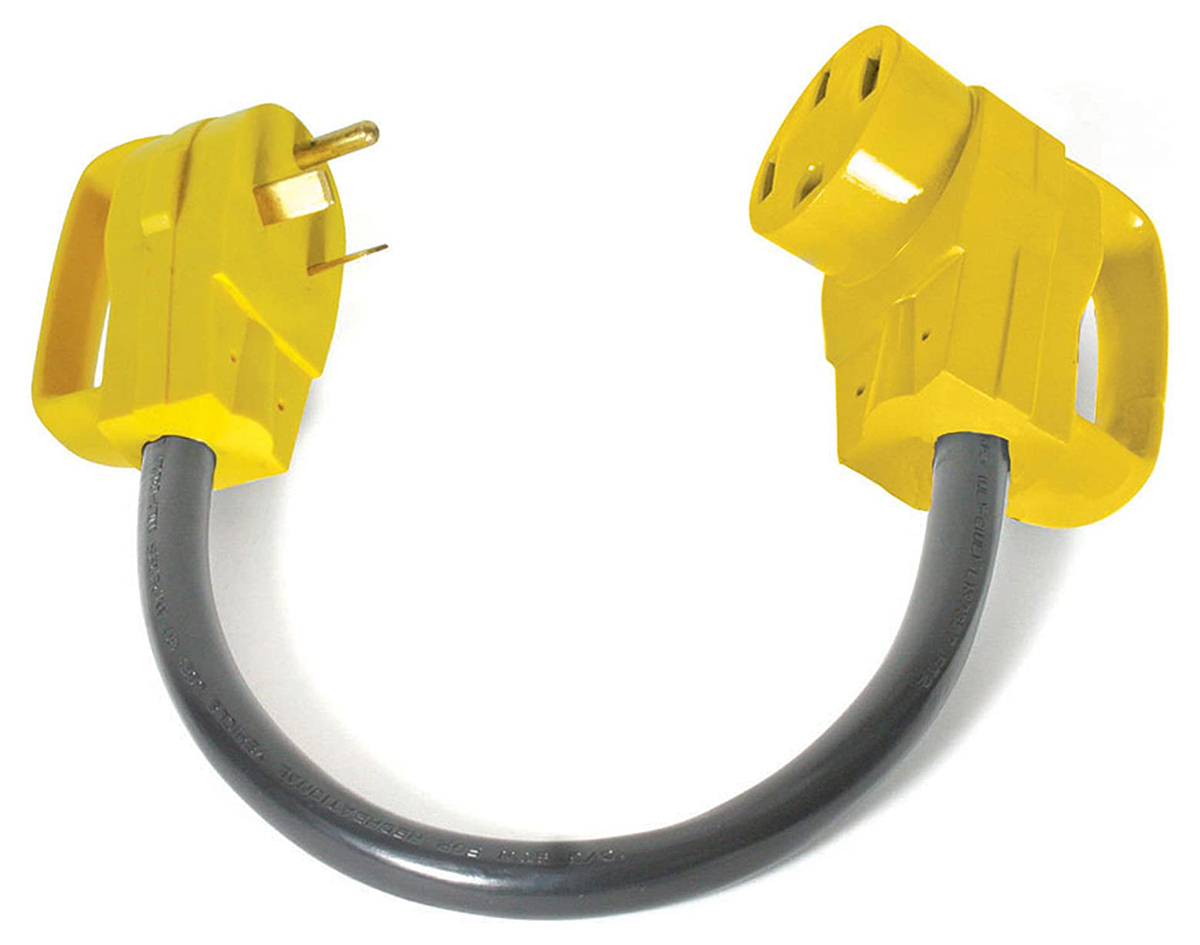
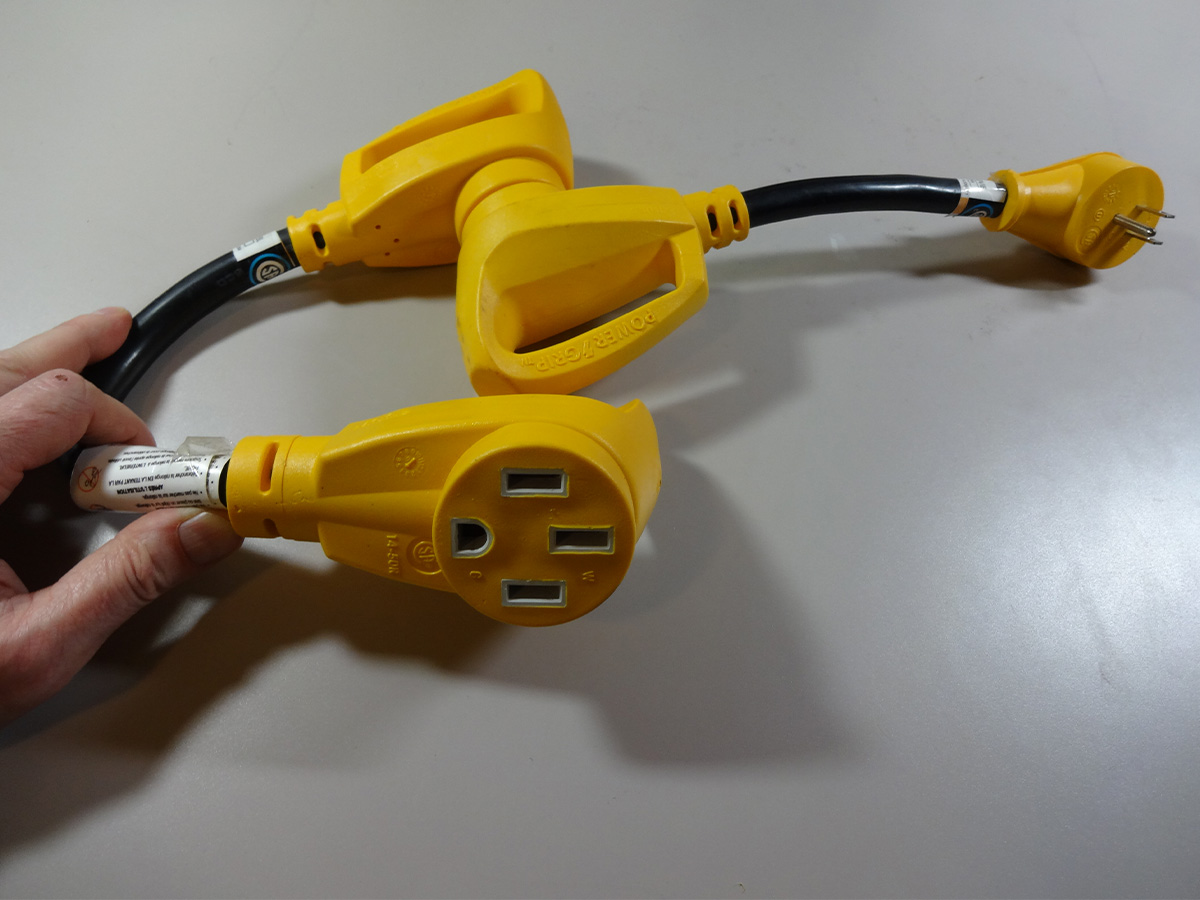
50-amp RV Adapters
Many RVs use a 50-amp 120/240-volt AC shore power cord. Note that while this is indeed a 240-volt AC service, it’s split down the middle into two separate 120-volt feeds (commonly called legs) with a four-pin plug (two hot, one neutral, one ground). Each leg feeds a separate side of the RV’s service panel. So, when you need to plug a three-pin, 30-amp RV into a 50-amp outlet (from a pedestal or generator), the 30-amp RV uses only one 120-volt AC leg at a maximum of 30 amps of current. Conversely, when you plug a 50-amp RV into a 30-amp shore power outlet, that single leg of 30-amp power is sent to both legs of the 50-amp shore power cord to share. However, the maximum current is always determined by how much amperage and how many power legs (1 or 2) are available from the outlet.
30-amp RV Adapters
If you have a 30-amp RV there are fewer options to consider. If you need to plug a 30-amp RV into a 50-amp shore power outlet, you’ll need a 50- to 30-amp adapter. Note that a properly wired dogbone adapter will only use one of the 120-volt AC legs in the 50-amp outlet to feed into the single leg of the 30-amp shore power cord, so you will indeed be feeding 120 volts AC to your RV’s electrical system, not 240 volts. However, power will still be limited to 30 amps total since your RV’s power center will have a 30-amp master circuit breaker. This adapter is also useful if the pedestal you’re plugging into has a worn 30-amp outlet but a newer 50-amp outlet. You won’t get any more power, but you may get a more solid outlet connection.

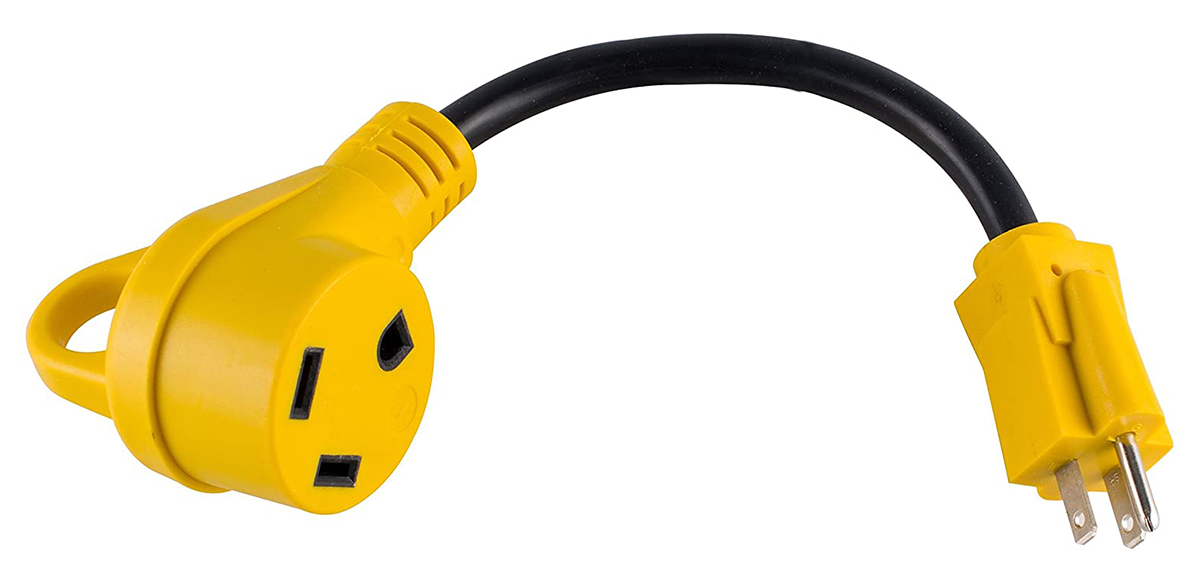
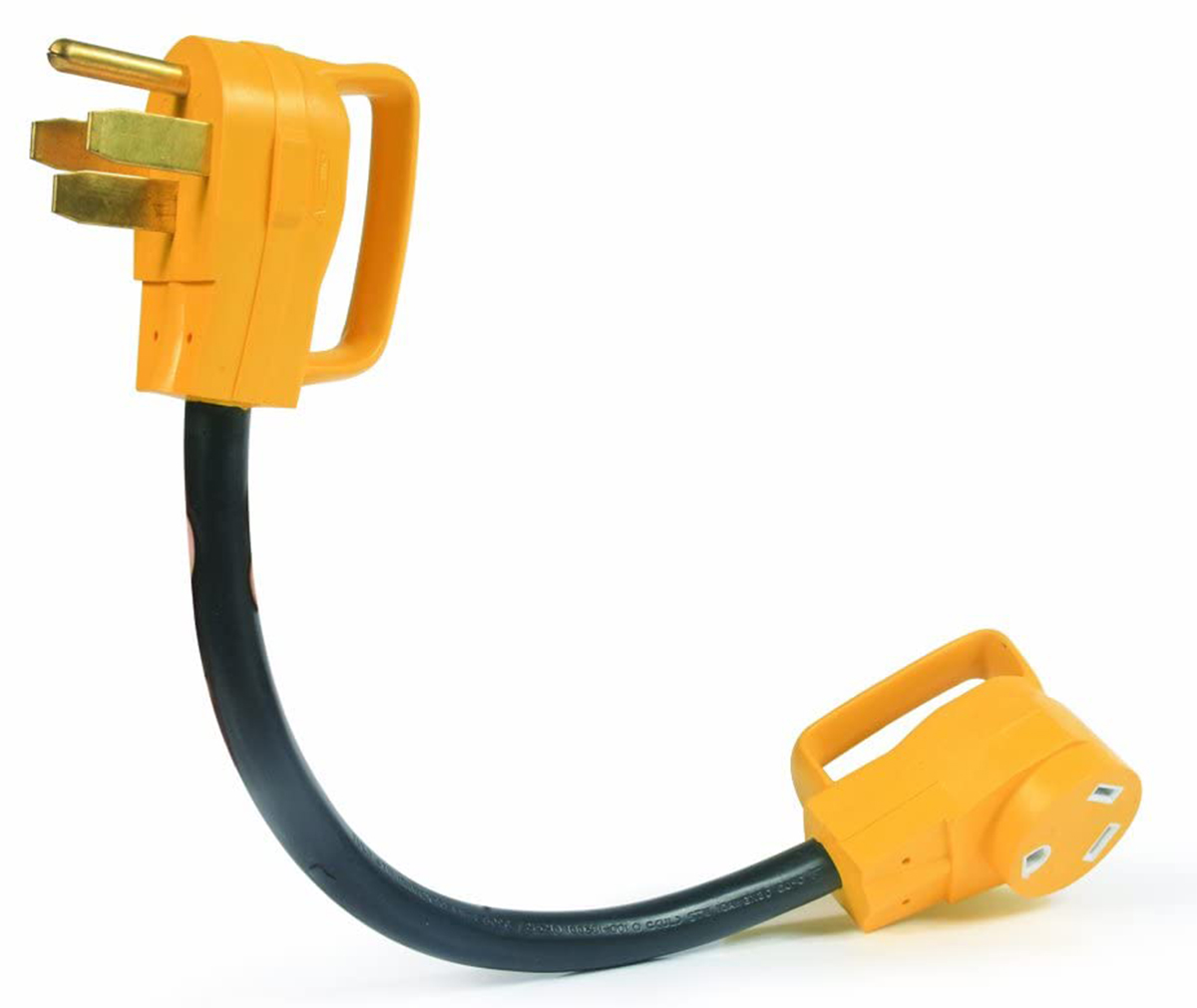
Just remember that you can’t get blood out of a turnip. So even if you’re using a 30- to 50-amp dogbone adapter to power a 50-amp RV, you still only have 30 amps of total current to use. The same goes for a 50-amp pedestal to 30-amp shore power dogbone connection: Your RV is still limited to 30 amps total current, no matter how much more you wish for.
Know, too, that all quality (not imported) dogbone adapters will properly split 240 volts AC from a 50-amp pedestal outlet or generator to the proper 120 volts AC for a 30-amp shore power cord, or 120/240-volts AC for a 50-amp RV shore power cord. If in doubt, always use a meter to confirm anything new before plugging in your RV.
Already a Subscriber? Click here for Access to the Full Issues.

